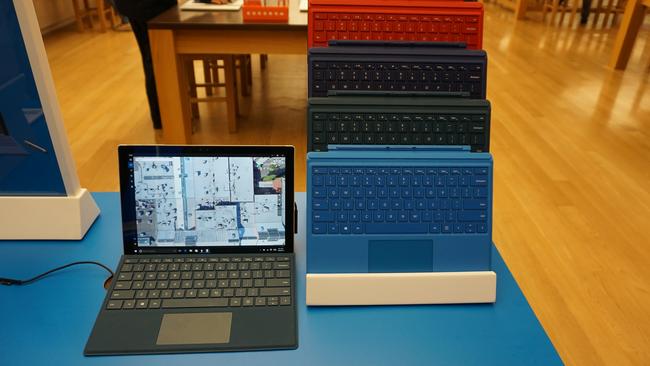Surface Pro, Skype Translator and lightwear help Satya Nadella’s Microsoft branch out
A voice translator, clothes that cure depression and artificial intelligence help Microsoft expand beyond Windows.

Microsoft’s giant leafy campus in Redmond, east of Seattle, Washington state, is made up of 125 buildings set in a green, serene environment, with 32 cafes, 31 espresso locations, 20 convenience stores that never close and 500 kitchenettes. Spreading across more than 740,000sq m, the campus has restaurants, bars, a hairdressing salon, post office, company store, 8km of fitness trails and, in the midst of all this, a very hi-tech sound chamber.
The chamber, the company says, is so quiet you can hear the blood rushing through your head. The question is, why does a software-maker such as Microsoft, founded by Bill Gates and Paul Allen in 1975, need it?
The sound chamber I saw is built on springs and has an airtight lock to avoid any hint of vibration from the building that surrounds it. During a whirlwind two-day tour last week, I can’t say I heard the blood rushing through my head but the chamber was unnervingly quiet. It can detect even the faintest noise in embryonic electronics, such as capacitors on circuit boards. These sounds can be eliminated before a product goes to market.
The answer to the above question is that these days Microsoft is much, much more than a software maker. Under newish chief executive Satya Nadella, Microsoft has diversified, with its fingers into everything from machine learning and digital whiteboards to Skype translators.
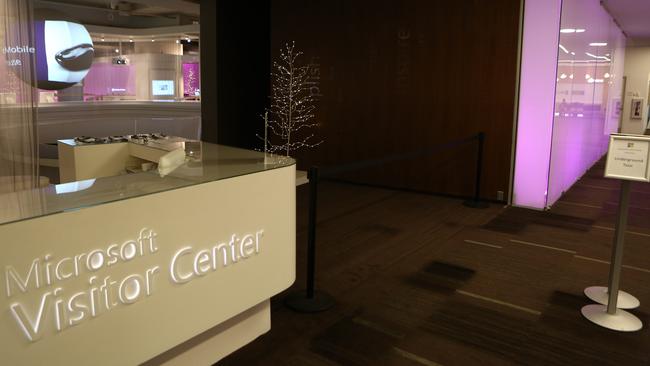
It’s dabbling in and prototyping machinery thanks to 3-D printers and push-the-envelope concepts such as the connected home, software for Android and even “lightwear clothing”. It has increased its involvement in hardware, a move former chief Steve Ballmer began when he pushed the acquisition of Nokia and the Surface tablet.
Nadella, Microsoft’s third chief executive, who has a classic technical background with degrees in electrical engineering and computer science, continues this push. A near-Microsoft lifer with 23 years at the company, this lover of cricket and poetry took the top job after masterminding a transition of the company’s enterprise business towards cloud computing.
It’s all part of a broader transformation. Last week Microsoft flexed its hardware muscles by announcing the fourth-generation Surface Pro, a line that’s finally proving profitable, along with the new Surface Book, the Microsoft Band 2 wearable and three Lumia phone models.
At Redmond, some projects we saw are close to mass availability. Skype Translator translates what you say into French, German, Italian, Spanish or Mandarin. The recipient hears your phrases, but spoken in their language. Translated instant messaging is available in 50 languages as well. The preview is now available.
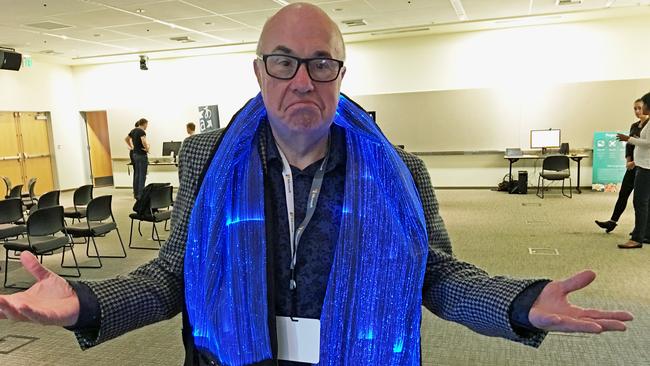
Hyperlapse smooths out camera shake in fast-action videos such as GoPro. But perhaps the most intriguing is Lightwear, light-emitting wearables for on-the-go treatment of seasonal affective disorder, a depressive condition that can affect northern hemisphere residents.
We have more than enough sunshine to bottle here, but in Britain, Canada, Scandinavia and northern US cities such as Seattle, the sun can set as early as 3pm in winter, leading to depressive illness from too much darkness. Microsoft has developed scarfs with tiny lights that can substitute for light boxes, presently the main form of treatment.
Artificial intelligence is another investment focus, in the form of machine learning, where software increases its own knowledge across time. Head of Microsoft Research and corporate vice-president Peter Lee gives the example of users who type “Aloha state” in the Bing search engine, then click on Hawaii-related topics. Over time Bing learns the connection.
Of all the demonstrations witnessed by this bespectacled writer, I was inspired by Microsoft’s ongoing research into a smartphone display you could view without reading glasses. I typify much of the population; I enjoyed 20/20 vision until my mid-40s, then needed reading glasses. About 60 per cent of Americans are far-sighted also.
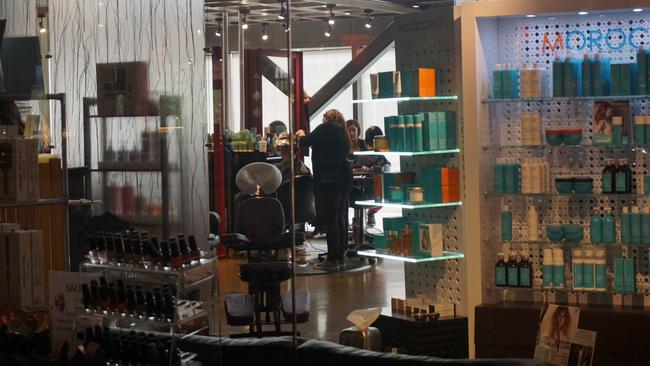
For this substantive number, reading a smartphone screen involves scrambling for your glasses first. It’s no seamless experience. Microsoft assures us this is under development; that’s good news. And it should be so, given that for ages, we, the farsighted, have been able to adjust a camera viewfinder dioptre for glasses-less use.
Microsoft’s Advanced Prototyping Centre, fresh from a $US43 million ($60m) refurbishment, is exploring dozens of ideas. This is where designs for Surface and Surface keyboards are tested. Each $US300,000 3-D printer sprays resin that is cured by ultraviolet light, in 15 micron layers, about a quarter the width of a human hair. The centre’s manager, John Haley, said it could print a Microsoft Surface in about four hours — fast for a prototype.
There are lockable rooms where designers secretly collaborate on projects that could be years from fruition. Other staff know nothing about them.
Dedicated to next-generation devices, the Applied Sciences Group Lab conducts optics experiments. Prototype hologram displays have menu systems that float in the air. You swipe them as you would a solid screen. A Human Factors centre deals with variability in people’s sizes, useful when designing the wearable Microsoft Band 2, a curved-shaped fitness tracker with 11 sensors including GPS and Microsoft’s Cortana personal assistant.
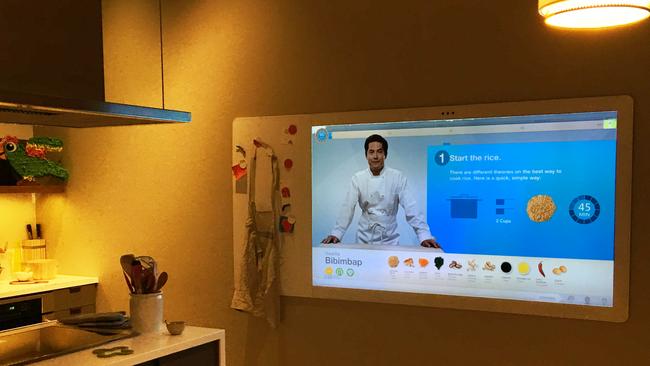
Microsoft showed us an electrode system it used for working out which muscles were engaged and for how long, when it tested various designs such as keyboards.
I also visited Microsoft Garage. It’s where staff and visitors can indulge their imaginations and pursue their pet projects. The company funds equipment needed for prototyping and, as with the Advanced Prototyping Centre, there’s 3-D printers on hand to help build them. A couple of years back, The Garage hosted a hackathon with more than 10,000 people globally taking part. Last year it grew to more than 19,000.
No tour of the Redmond campus is complete without a Microsoft Office briefing, and we learned that Office 2016 contains cloud attachments for Outlook email and real-time typing when collaborators get together using Word.
Despite more than 42,000 staff (about 100 join each week) on campus you don’t see crowds. The trees, ponds and open grass areas engender a left-to-your-own-devices feeling, but in the end, if you work for a tech giant, you need to perform. The size of the headquarters is testament to Microsoft’s great success as one of the world’s grandest technology companies.
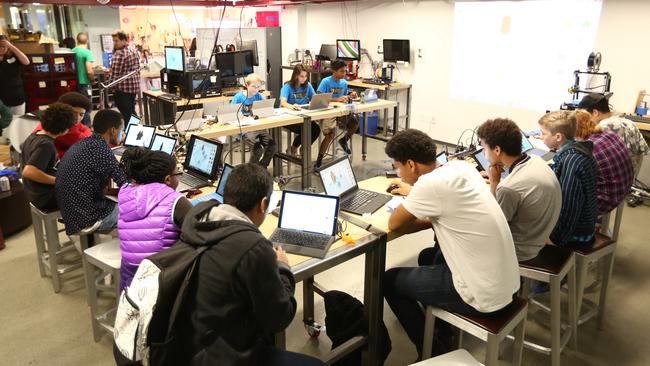
Yet I felt also a vulnerability. The failure of Windows Vista, the foisting of Windows 8 on a public that never wanted much of it and wasn’t consulted, and the ability of Apple to be the dominant force in the consumer market, forced Microsoft to confront that it wasn’t the unassailable computing power it believed it was. That, coupled with the decline of the PC market, its staple, forced Microsoft to move into new businesses to stay relevant and prosper.
It has met with mixed success. Skipping Windows 9 and going straight from 8 to 10 seemed to many an apology for the Windows 8 debacle. Financially, Microsoft has had a topsy-turvy ride. It endured a June quarter loss of $US3.2 billion, writing down 80 per cent of its $US9.4bn Nokia acquisition and cutting 7800 Nokia jobs. It may dump its poorly performing mobile handset unit.
While revenue from its Azure cloud computing platform, server products and Surface tablet sales are strong, the softening of the PC market has hurt its bottom line.
The company also has worked hard to change its culture. “There was a view of Microsoft as having internal turf battles and that was holding the company back from innovation,” says Tim O’Brien, Microsoft general manager, global communications.
“Putting the company first, putting it above your team, your organisation and your product group, is another very strong cultural element here. I can tell you as someone who’s been here for 12 years, the last two years have been markedly different. Defending your turf, defending your little empire is no longer rewarded.”
Chris Griffith travelled to Seattle courtesy of Microsoft.
